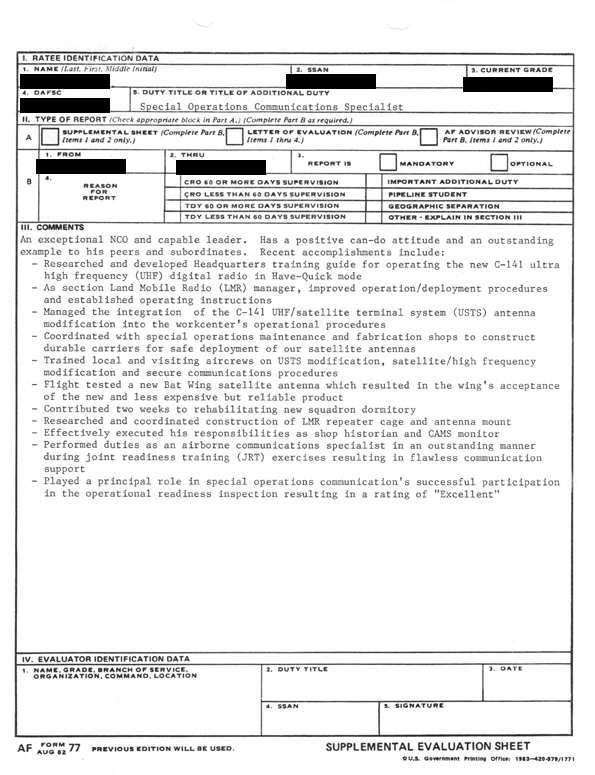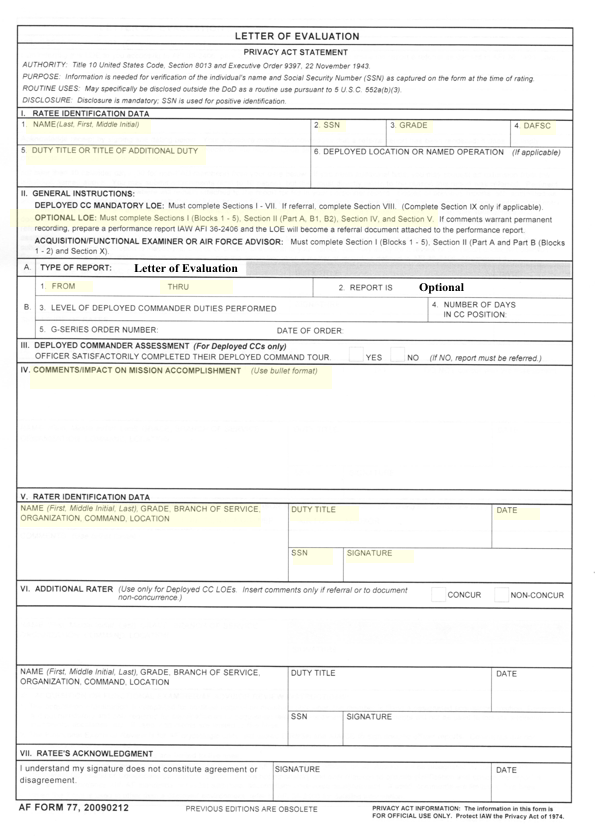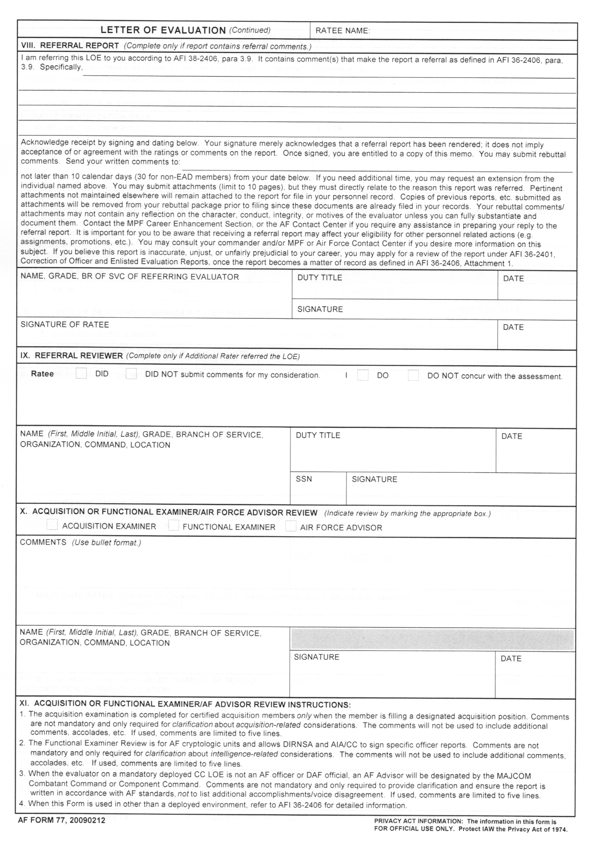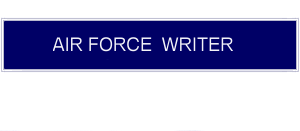AF Form 77, Letter of Evaluation (LOE)
Purpose. The original purpose of the AF Form 77 was to record performance when it wasn't possible to include it in an EPR. For example, if one of your troops received an assignment and he wasn't due for an EPR because he just had one, any notable achievements since the last EPR would not be recorded anywhere. And when he arrived at the next duty station, he may be due for an EPR in just a few months. If so, he would be at a disadvantage because he doesn't have the full year to demonstrate his performance and his new supervisor may not have enough material for the next EPR. A hard-working troop might get a lower rating than he deserves because of it.
The AF Form 77 solves that problem. It gives the current supervisor a way to record the ratee's achievements since the last EPR. Note that the AF Form 77 is optional. Many or most people don't receive one because it's not applicable. They may not have any notable achievements since the last EPR. Or they or their supervisor are not focused on administrative requirements. A lot of maintenance troops are this way.
Normally the supervisor would give the completed AF Form 77 to the ratee and the ratee would hand-carry it to his next station and present it to his supervisor. His new supervisor would probably be thrilled to receive it because it means he has less work to do. The new supervisor would then add the material on the AF Form 77 to the next EPR.
It's also common for the AF Form 77 to be used to document a troop's performance while TDY so that when he or she returns to their home station, they'll have content for their EPR that would otherwise be missing because of their absence.
Note that, because LOEs are optional, if a new troop arrives at his next duty station with an LOE, the new supervisor may interpret it to mean that the troop is above average and that his previous workcenter recognized his contributions and wanted to make sure he started off on the right foot at his next base. After all, what supervisor would go to the trouble of completing an AF Form 77 for a problem troop who's late for work every day? So, under certain circumstances, an LOE can be used to recognize superior performance.
Filling Out the Form. Filling in the form is self-explanatory. Although the form was originally used to record information for future EPRs and was as simple to complete as adding names and bullet comments (see previous form below), the Air Force put together a committee and improved it. Now it has all sorts of additional, specialized functions. But, in general, filling it out for the purpose of recording supplemental information for the EPR, is the same as it's always been: just add the ratee's and rater's names and add bullets. Note that the Letter of Evaluation does not have the requirement to address the categories of performance listed on the EPR. There is no minimum amount of text that has to be entered. All you have to do is list the work that the ratee has performed, whether it's a single line or twenty bullets. It's an informal document and optional. You don't even have to complete one if the troop doesn't deserve one or have any material to record. Whatever you care to document is a bonus for the ratee.
See the highlighted blocks of the document below for the areas that must be filled out to document supplemental EPR material (called an Optional LOE on the form).
See AFI 36-2406 for instructions on filling out the form. Contact MPF and consult a document specialist for directions on the new document's ancillary purposes.
Ref: AFI36-2406 Officer and Enlisted Evaluation System
Ref: AF Form 77 Letter of Evaluation
Example Letter of Evaluation Example
Example Letter of Evaluation Example #2
Example Letter of Evaluation Example #3
Example Letter of Evaluation Example #4
Example Letter of Evaluation Example #5
Form Abbreviations
AGR (Active Guard and Reserve)
LEAD (Limited Extended Active Duty)
Non-EAD (Non-Extended Active Duty -defined as active duty for a period in excess of 270 days)
Previous Letter of Evaluation

NEW Letter of Evaluation


